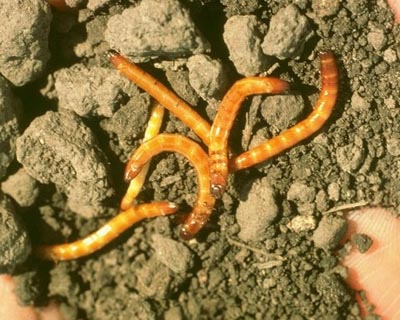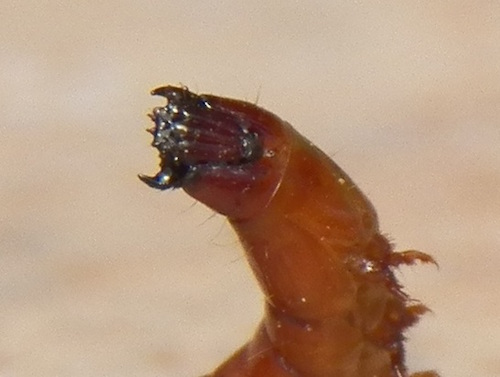Wireworms
Elateridae
|
Wireworm larvae. |
Head of wireworm larva showing wedge-shaped profile. |
Wireworms are the larval stage of click beetles. Larvae are slender and shiny, yellow to brown, with six slender, short legs. Mature larvae range from 1/2 to 1 inch long. Problems are worse in loose or sandy soils that facilitate larval movement. Larvae orient to the smell of germinating seeds and will often follow the drill row, consuming seed as they go. Larvae of some species may take four or more years to complete development. Generations often overlap, with a wide range of larval sizes present in the same field. The only real treatment option for wireworms is seed treatment, either on initial planting if there is a history of wireworms in the field, or when replanting due to wireworm injury. Seed commercially treated with imidacloprid (Dyna Shield Imidacloprid, Gaucho, Gaucho Grande, Gaucho XT, Imida, Raxil MD-W and Senator) or thiamethoxam (Cruiser) generally provides acceptable control of wireworms. Follow label directions on rates, application method and safety precautions. Do not feed treated seed or contaminate grain not being used for seed. Also note that some products may restrict grazing after planting treated seed.
Please refer to the most recent version of the Wheat Insect Management Guide for control options.
Page last updated 10/31/2013 by J.P. Michaud.

